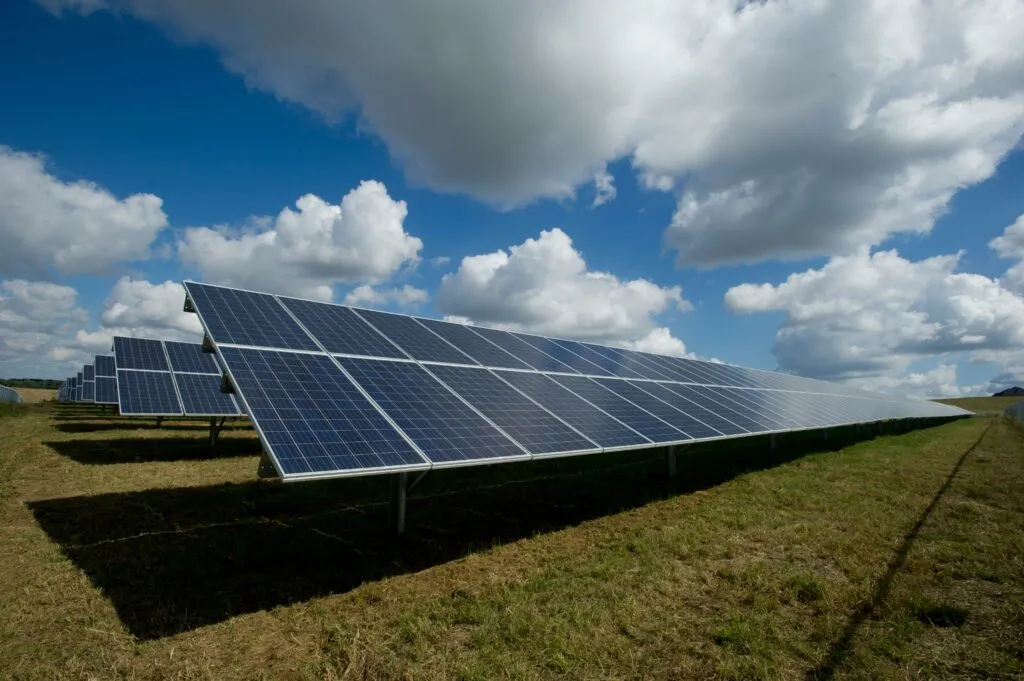At Dyme, we like all things solar. Solar energy projects create good jobs, make communities more resilient, cut bills for families and businesses, and keep a lot of CO₂ out of the air.
Below is a quick set of facts and figures we read over the summer.
1. Solar Is Now a Mainstream Power Source
Solar’s contribution to the global electricity mix has grown dramatically. In 2024, solar panels produced approximately 2,132 TWh of electricity, a monumental increase that pushed its share to roughly 6.9% of global generation. For context, solar added twice as much new generation as coal last year, proving it’s a key driver of clean energy growth.
2. Global Solar Capacity Has Reached a New Milestone
The world’s solar capacity continues to grow at an unprecedented pace. By the end of 2024, global deployment of solar PV surpassed 2 terawatts (TW). It took 68 years for the world to reach its first terawatt milestone, but just two years to double that capacity. This incredible acceleration demonstrates solar’s unmatched ability to scale.
3. The U.S. Market is Dominated by Utility-Scale Projects
In the U.S., large-scale solar is leading the charge. In the first half of 2025, utility-scale solar and battery storage accounted for a record 82% of all new electricity capacity. Despite some policy changes, utility-scale solar capacity continues to expand, reflecting strong market demand from major corporations and utilities committed to clean energy targets.
4. Solar Dramatically Boosts Energy Security
As geopolitical conflicts highlight the risks of fossil fuel dependence, solar has emerged as a critical tool for energy independence. According to a recent analysis by think tank Ember, the rapid deployment of solar and wind is actively reducing reliance on imported fossil fuels. For many nations, this shift is not just an environmental choice but a matter of national security.
5. Policy Uncertainty Is Now the Biggest Threat to Growth
While the numbers show a boom, the industry faces a significant headwind from policy changes. A report by SEIA and Wood Mackenzie projects that the U.S. solar industry could see a 27% drop in projected installations between 2026 and 2030, a direct result of the rollback of clean energy subsidies. This forecast highlights how government policy remains a critical factor in the long-term health of the solar sector.
6. Solar Is a Powerful Engine for Job Creation
The solar industry isn’t just about kilowatts; it’s about jobs and economic development. The U.S. is rapidly adding utility-scale solar projects, which are now supporting 30,000 jobs and $2.8 billion in payroll from new domestic manufacturing facilities. The industry is not only producing clean energy but also rebuilding robust, local supply chains.
7. Rooftop Solar Delivers Major Long-Term Savings
For homeowners, solar is a sound financial investment. In the U.S., a 30% federal tax credit has made solar more affordable than ever, leading to long-term savings that can exceed $50,000 over a system’s 25-year lifespan. However, as the policy landscape shifts, the future of this residential market faces uncertainty, with some analysts warning of a potential drop in demand if key incentives are not maintained.
8. The EU Is a Model for Solar-Powered Economies
Europe provides a clear example of solar’s economic and employment benefits. In 2023, solar supplied 9.1% of the EU’s electricity and helped boost sector employment to 648,100 jobs, a 39% increase from 2021. While the pace of growth is expected to moderate slightly in 2024, the EU’s commitment to solar power remains strong.
9. Distributed Solar Makes Grids More Resilient
Beyond large-scale projects, distributed solar; like rooftop systems on homes and businesses, is proving its value by making power systems more reliable and efficient. By decentralizing energy generation, these systems reduce strain on the grid, lower system costs, and increase local energy self-sufficiency, especially when integrated with other technologies like heat pumps and electric vehicles.
10. The Price of Solar Continues to Fall
The cost of solar modules has plummeted by over 90% in the last decade, making solar the most affordable form of new electricity generation in many parts of the world. This trend, largely driven by advancements in technology and mass manufacturing, ensures that even as markets evolve, the fundamental value proposition of solar energy remains incredibly strong.

The Road Ahead
Feel free to add your own links that highlight what you value most—jobs, resilience, savings, or avoided CO₂. The mix may shift, but the case for solar holds. We’ll keep this list fresh. And when you travel, Dyme turns bookings into new solar—using our profits to fund projects that power schools and community sites, cut energy bills for years, and make local grids steadier—while you save.






